Should I Use A 5-Wood or 3-Hybrid?
Unsure on if you should choose a 5-wood or 3-hybrid? We break down the strengths and weaknesses of each type of club
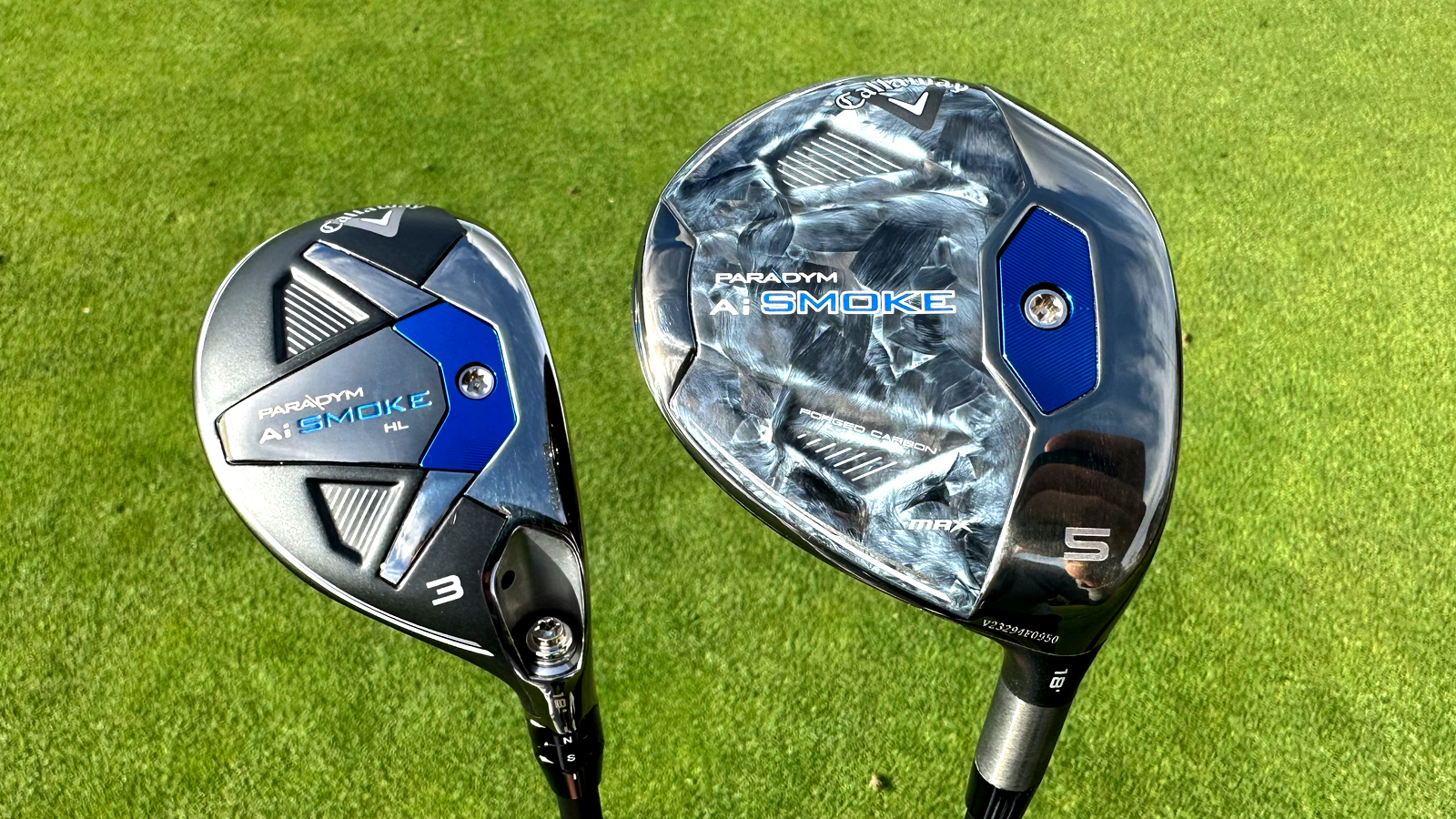

Bridging the gap between your driver or three wood and the longest iron in your bag is a challenge to a lot of golfers, largely because there is a nearly overwhelming amount of options among the best fairway woods and best golf hybrids. Factor in the difficulty level on striking the ball well and accurately from the distances where you would be using these clubs and choosing the right type of fairway wood becomes even more challenging. The choice between using a 5-wood or 3-hybrid is the choice that many golfers are facing, but which one should you be using? Here are some factors to consider...
Forgiveness
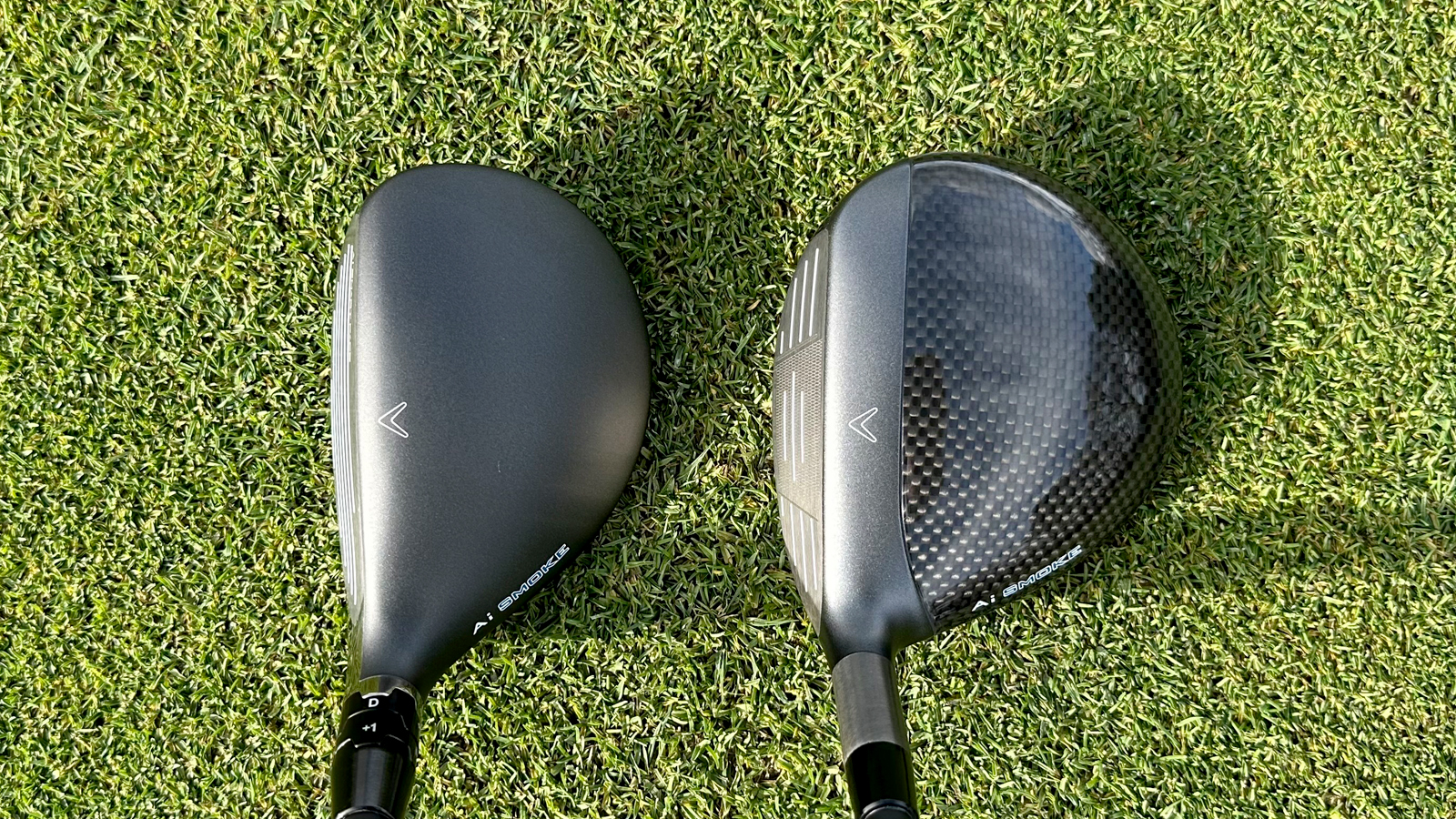
A 5-wood and 3-hybrid offer different looks at address
This is an important factor on shots from this sort of distance, or where accuracy is at a premium. While both a 5-wood and 3-hybrid are very forgiving clubs by nature, how they will perform will largely depend on the lie as well as the shot you are trying to hit.
The head of a 5-wood is marginally smaller head than a 3-wood but notably larger than that of a 3-hybrid. This means the Center of Gravity (CG) is typically positioned deeper, which raises the Moment Of Inertia (MOI) , a common measure of forgiveness off center, and also launch. A 5-wood has been designed to perform well from cleaner lies, such as from the tee and on the fairway but the larger head does make it slightly more tricky to cut through the rough or longer grass if you happen to miss the fairway.
A 3-hybrid tends to be more compact than a 5-wood and often more toe-heavy in shape too depending on the model. The smaller head will typically glide through rough a little easier than the 5-wood, making it a great option for those who aren't overly accurate from the tee, although results can be player dependent.
A 3-hybrid will typically come with 18° or 19° of loft and a shaft length of 41" or less, compared to a 5-wood which will tend to measure between 41-42". While one inch may not seem like a lot, this difference in shaft length could affect the club speed as well as consistency of strike.
Distance
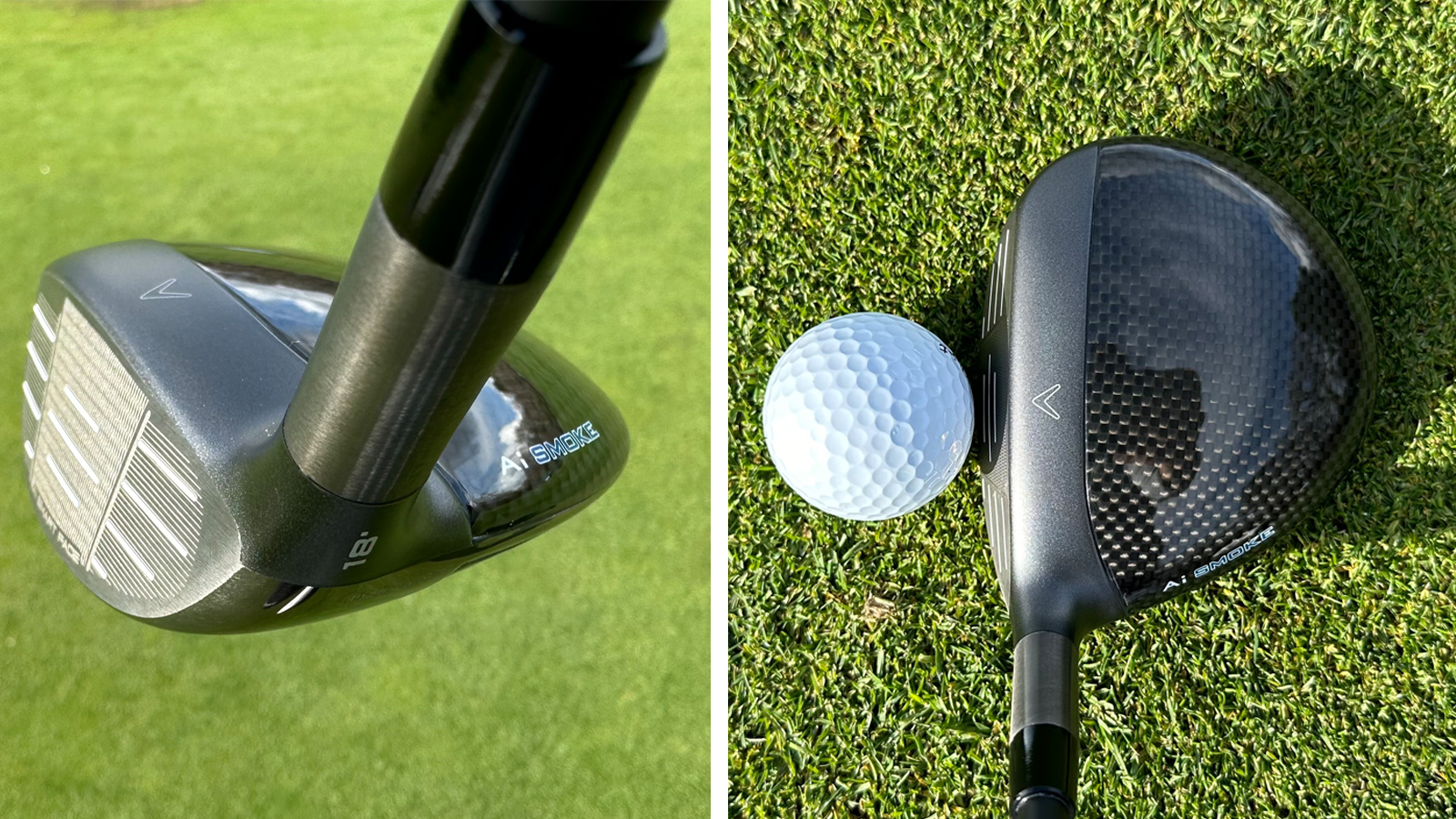
The Callaway Paradym Ai-Smoke 5-wood
Opting for a 5-wood or 3-hybrid should also be influenced by how far you want that specific club to go. Despite being similar in loft (usually within a degree) these two clubs will typically travel slightly different distances due to a few factors. Firstly, the larger head of the 5-wood will present more mass behind the ball, that combined with a marginally longer shaft, will create more speed and more force at impact, therefore producing more ball speed and sending the ball further. While there may not be much difference between the two, five yards of extra carry could be the difference between covering the greenside bunker and going for the green, or having to lay up.
Think back to a few recent rounds on the golf course and analyse the shots you had where you would typically have used one of these two clubs and what those shots looked like. You should consider how far you currently hit your longest iron - in most cases people will carry up to a 4-iron and then take note of how far your 3-wood travels. By knowing these distances you can make a more logical decision as to whether the 5-wood or 3-hybrid will slot into your set-up.
Get the Golf Monthly Newsletter
Subscribe to the Golf Monthly newsletter to stay up to date with all the latest tour news, equipment news, reviews, head-to-heads and buyer’s guides from our team of experienced experts.
One further point worth noting is that most 5-woods we have seen tend to be bonded, meaning they are not adjustable, whereas there are many more hybrids on the market that offer a little more customization through an adjustable hosel. Therefore, if you are someone who prefers the smaller head shape of a hybrid but is seeking the same distance as 5-wood offers, you could always loft the hybrid down one degree or so - just be aware that this will slightly open the face position at address on some models.
Ball Flight, Angle Of Attack and Launch
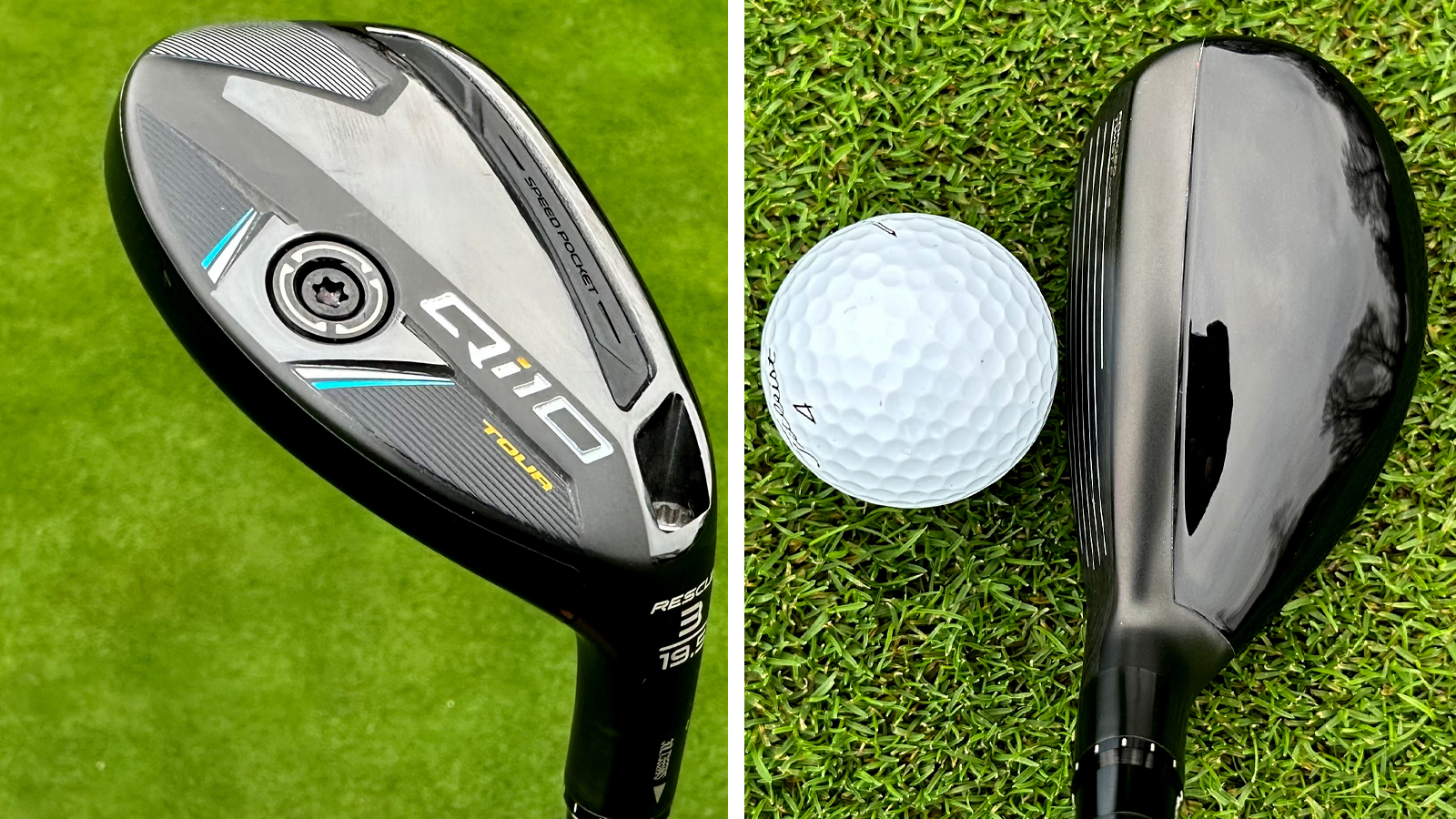
The TaylorMade Qi10 Tour Hybrid has a compact head that will please the eye of the more confident ball striker
Depending on how you deliver the club into the ball at impact, you will be better suited into either the 5-wood or the 3-hybrid. Players with a steeper attack angle may prefer the use of a hybrid because there will be less resistance with the ground due to the narrower sole, as opposed to 5-wood which will compliment the golfer who is more shallow in their club delivery.
One thing to note in regards to the shorter shaft length of the 3-hybrid is that it will sit with a more upright lie angle and therefore promote a draw-biased shot shape, although manufacturers are building lie angles flatter as standard and more toe weighting to counteract this common complaint. Some even have moveable weight, like the TSR3 hybrid, that alter the shot shape bias. While the lie angle is flatter on the 5-wood due to shaft length, golfers who always suffered with ‘hooking’ the ball may have shied away from them due to the offset presented at address, however more modern 5-woods sit far more neutral behind the ball.
Because of the CG placement, head design and added speed of the 5-wood, you can expect a higher ball flight than that of the 3-hybrid. This is again something to consider when looking to add one of these two clubs to your bag. If you play most of your golf in windy conditions then you may find you benefit from the slightly flatter ball flight of the 3-hybrid in comparison to the high flying 5-wood and vice versa, if you spend most of your time playing in calmer conditions or firm ground conditions, the 5-wood may be best suited. The height and distance of the 5-wood will allow you to attack longer par 4s or 5s knowing that the easier launch and steeper descent angle should get the ball stopping a little faster.
Which One Is Right For You?
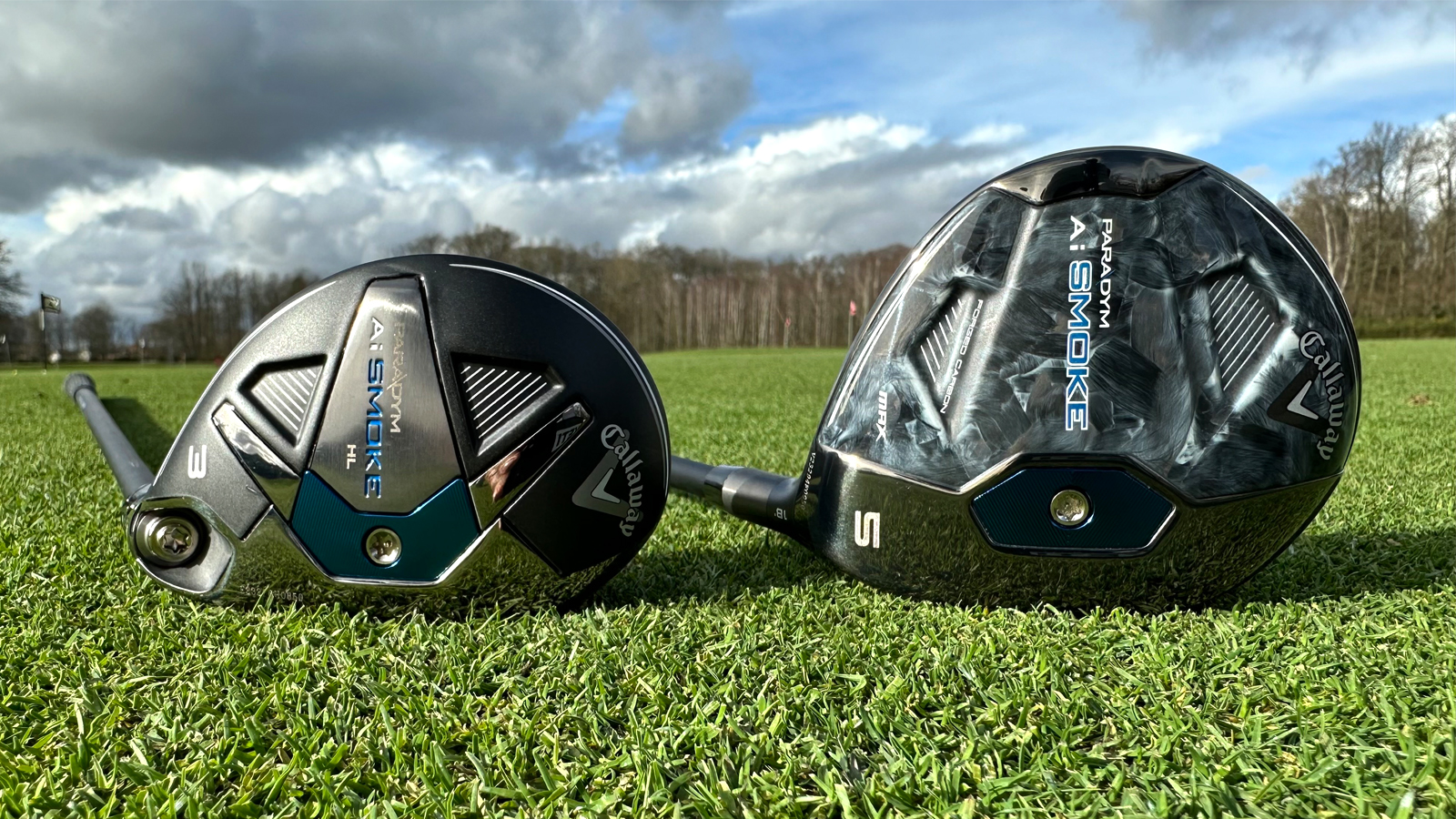
The Callaway Paradym Ai-Smoke 5-wood and 3-hybrid
If you are seeking a club to become your new ‘fairway finder’, has a very high launch and allows you to attack longer holes from the fairway, the 5-wood is a superb option. The high ball flight and distance on offer will make this club a great option for those seeking to bridge a large gap between your long irons and 3-wood.

The Callaway Paradym Ai-Smoke 5-wood
If you prefer the look of a smaller, more compact head with plenty of versatility on hand, then the 3-hybrid may be the more suitable option for you. Performing equally as well from the rough as tight lies on the fairway and often equipped with an adjustable hosel, the 3-hybrid can be the Swiss Army Knife of the golfing world. Golfers with faster swing speeds may benefit from the lower and more workable flight presented by the likes of a 3-hybrid.
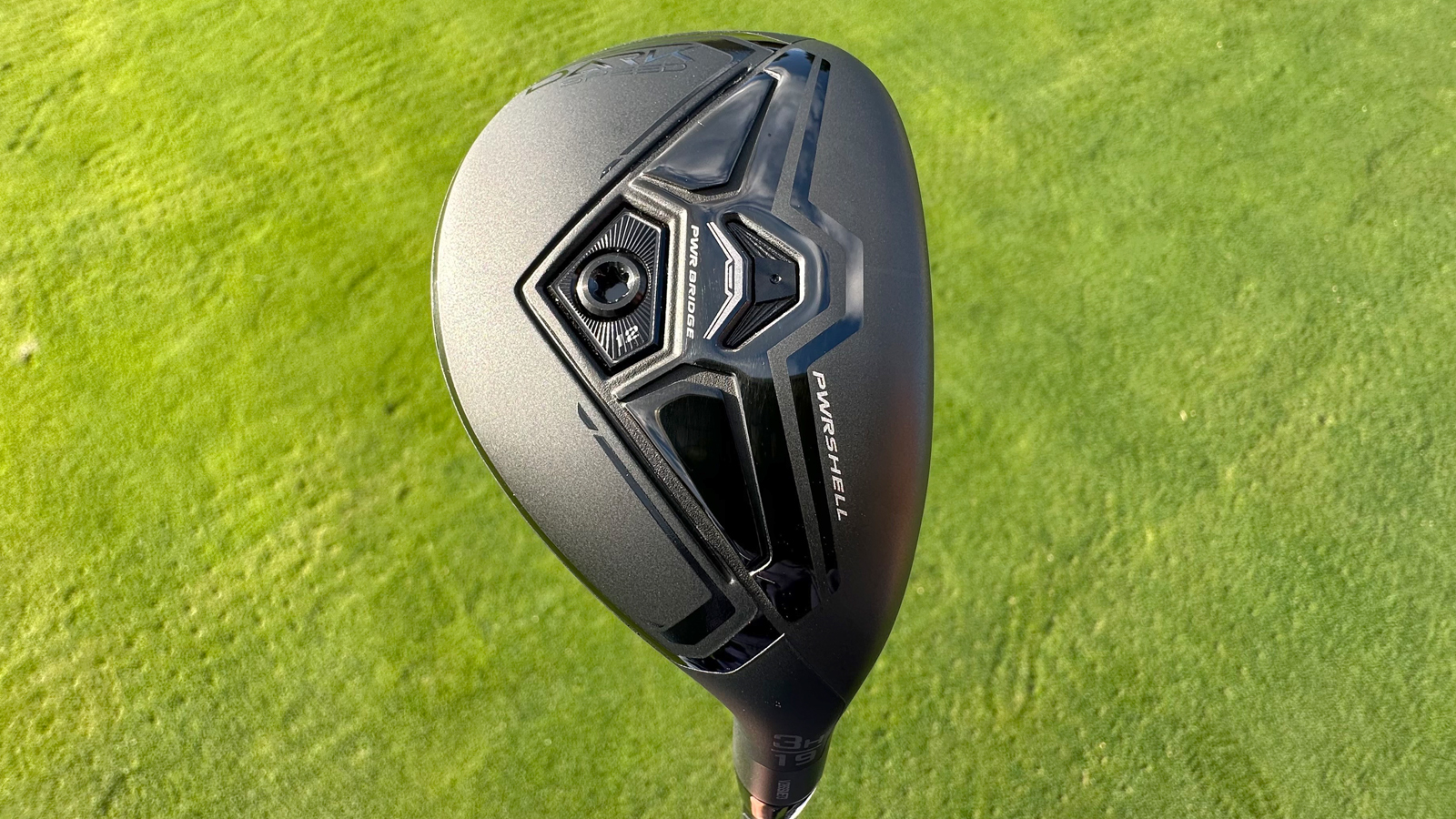
The Cobra Darkspeed Hybrid was named our best hybrid of the year due to looks and performance
The choice of whether a 5-wood or 3-hybrid makes it into your bag should be based on your swing tendencies and needs as a golfer. Trying as many different models as possible to find one you like the look and feel of could drastically improve your enjoyment and success with that specific club. Good luck on your search!

Sam has worked in the golf industry for 14 years, offering advice on equipment to all levels of golfers. Sam heads up any content around fairway woods, hybrids, wedges, putters and golf balls but also writes about other equipment from time to time.Sam graduated from Webber International University in 2017 with a BSc Marketing Management degree while playing collegiate golf. His experience of playing professionally on both the EuroPro Tour and Clutch Pro Tour, alongside his golf retail history, means Sam has extensive knowledge of golf equipment and what works for different types of golfer.
Sam’s current What’s In The Bag?
Driver: TaylorMade Qi35 9°
Fairway Woods: TaylorMade Qi35 15°, Srixon ZXi 18°
Irons: TaylorMade CB (6-PW) P770 (4-5)
Wedges: Titleist Vokey SM10, 50°, 54°, 60°
Putter: Kevin Burns 9307
Ball: Titleist Pro V1x
-
 Rory McIlroy Invited To Old Trafford By Manchester United Boss Ruben Amorim After Masters Victory
Rory McIlroy Invited To Old Trafford By Manchester United Boss Ruben Amorim After Masters VictoryFollowing on from his Masters victory, McIlroy has received an invitation from Manchester United manager, Ruben Amorim, to show off his Green Jacket at Old Trafford
By Matt Cradock
-
 The Most Wanted Item From The Masters Shop Is Being Listed On Ebay At Almost 4,000% Higher Than Its Original Price
The Most Wanted Item From The Masters Shop Is Being Listed On Ebay At Almost 4,000% Higher Than Its Original PriceThe 2025 Masters Gnome is called 'Peaches' and has been commanding an extremely sour price after being put up for sale online this week....
By Jonny Leighfield
-
 Could This 'Stumbled Upon' Equipment Switch Finally Land Rory McIlroy the Grand Slam?
Could This 'Stumbled Upon' Equipment Switch Finally Land Rory McIlroy the Grand Slam?Rory McIlroy made a golf ball change earlier this season that has reignited his wedge play and it could be about to pay off in the most dramatic possible way…
By Joe Ferguson
-
 Real Players Use Long Irons, Right? Well, Fred Couples Nearly Made The Cut At The Masters At 65 Years Old, And His Longest Iron Is A…
Real Players Use Long Irons, Right? Well, Fred Couples Nearly Made The Cut At The Masters At 65 Years Old, And His Longest Iron Is A…Both Couples and Bernhard Langer turned back the clock brilliantly over the first two days at Augusta National and did so with some interesting bag setups.
By Joe Ferguson
-
 I Built Tiger Woods’ 2019 Masters Winning Bag From The Second-Hand Market!
I Built Tiger Woods’ 2019 Masters Winning Bag From The Second-Hand Market!PGA Professional Joe Ferguson has been taking a deep dive into Tiger’s bag for arguably the greatest victory of his career…
By Joe Ferguson
-
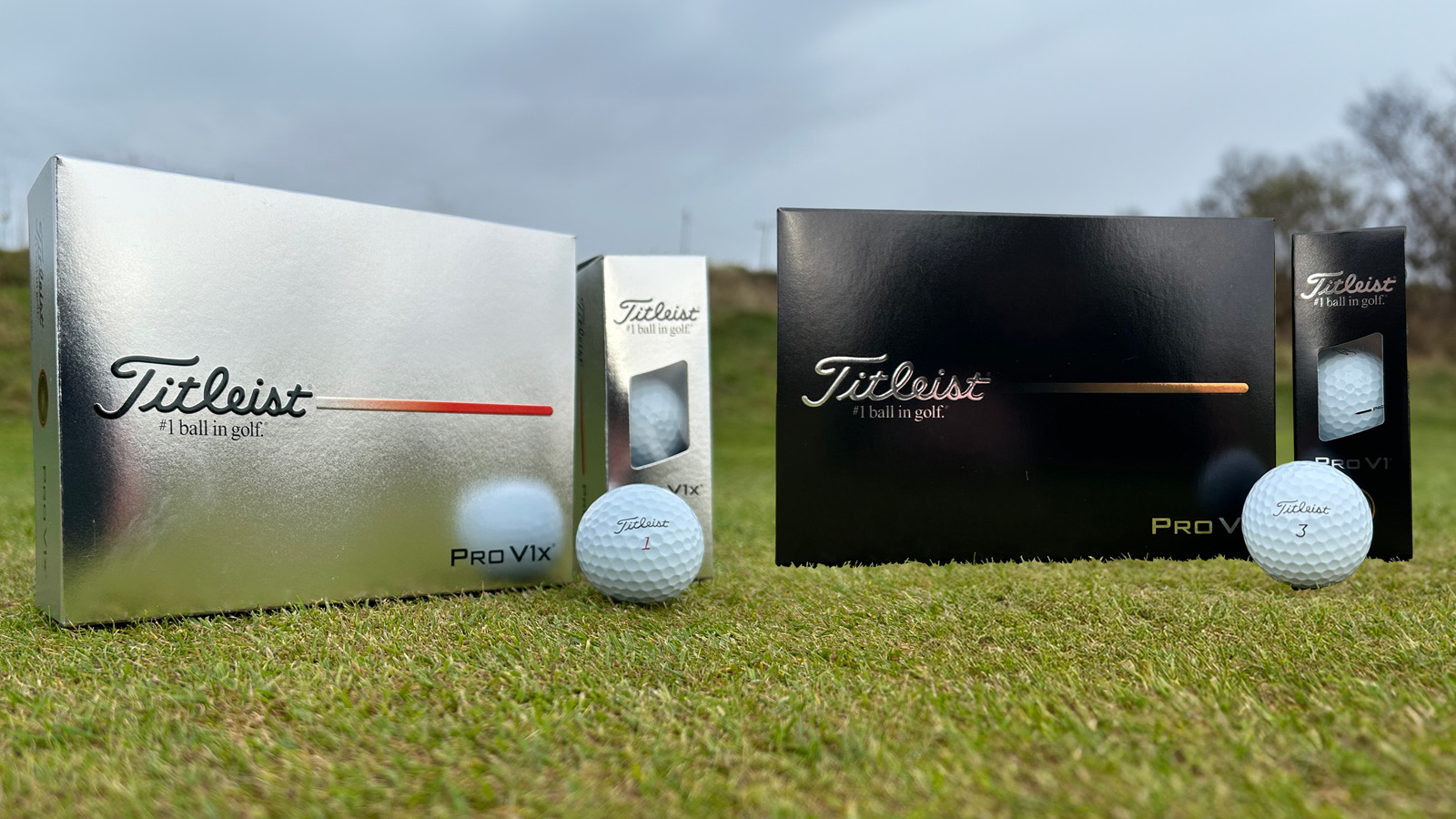 How Titleist 'Used Every Tool In The Toolbox' To Enhance The New Pro V1 And Pro V1x Golf Balls
How Titleist 'Used Every Tool In The Toolbox' To Enhance The New Pro V1 And Pro V1x Golf BallsAfter months of testing and tour validation the new Titleist Pro V1 and Pro V1x golf balls are set to launch, but what's new? We explain all
By Sam De'Ath
-
 How The New Cobra DS-ADAPT Range Looks To Have Changed Driver Fitting Forever
How The New Cobra DS-ADAPT Range Looks To Have Changed Driver Fitting ForeverWith a revolutionary hosel design and refined aerodynamics, the Cobra DS-ADAPT may just become the standout driver in 2025
By Sam De'Ath
-
 £39 Vs £169 Wedge Test... Surprising Results!
£39 Vs £169 Wedge Test... Surprising Results!In his latest Retro Review, Joe Ferguson sees if the original Vokey wedge picked up for just £39 can compete with the modern equivalent four times the price
By Joe Ferguson
-
 7 Useful Golf Rangefinder Features You Never Knew About
7 Useful Golf Rangefinder Features You Never Knew AboutThink you know everything a rangefinder can do? Think again. We've got seven of the best features currently available on the best modern rangefinders
By Dan Parker
-
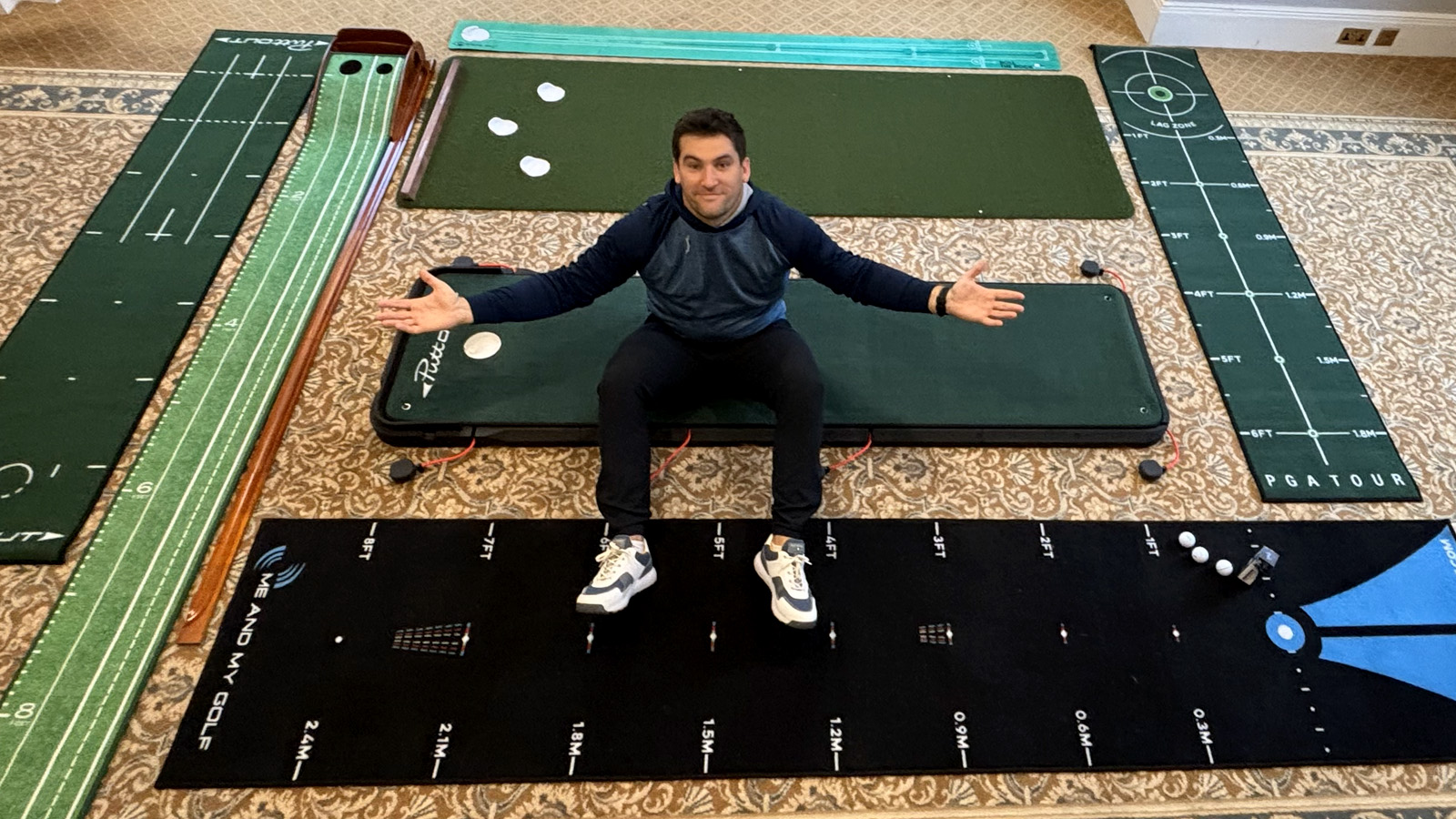 Do Putting Mats Help Improve Your Putting?
Do Putting Mats Help Improve Your Putting?Former professional golfer Sam De’Ath sheds light on whether or not a home putting mat can help improve your performance on the greens
By Sam De'Ath